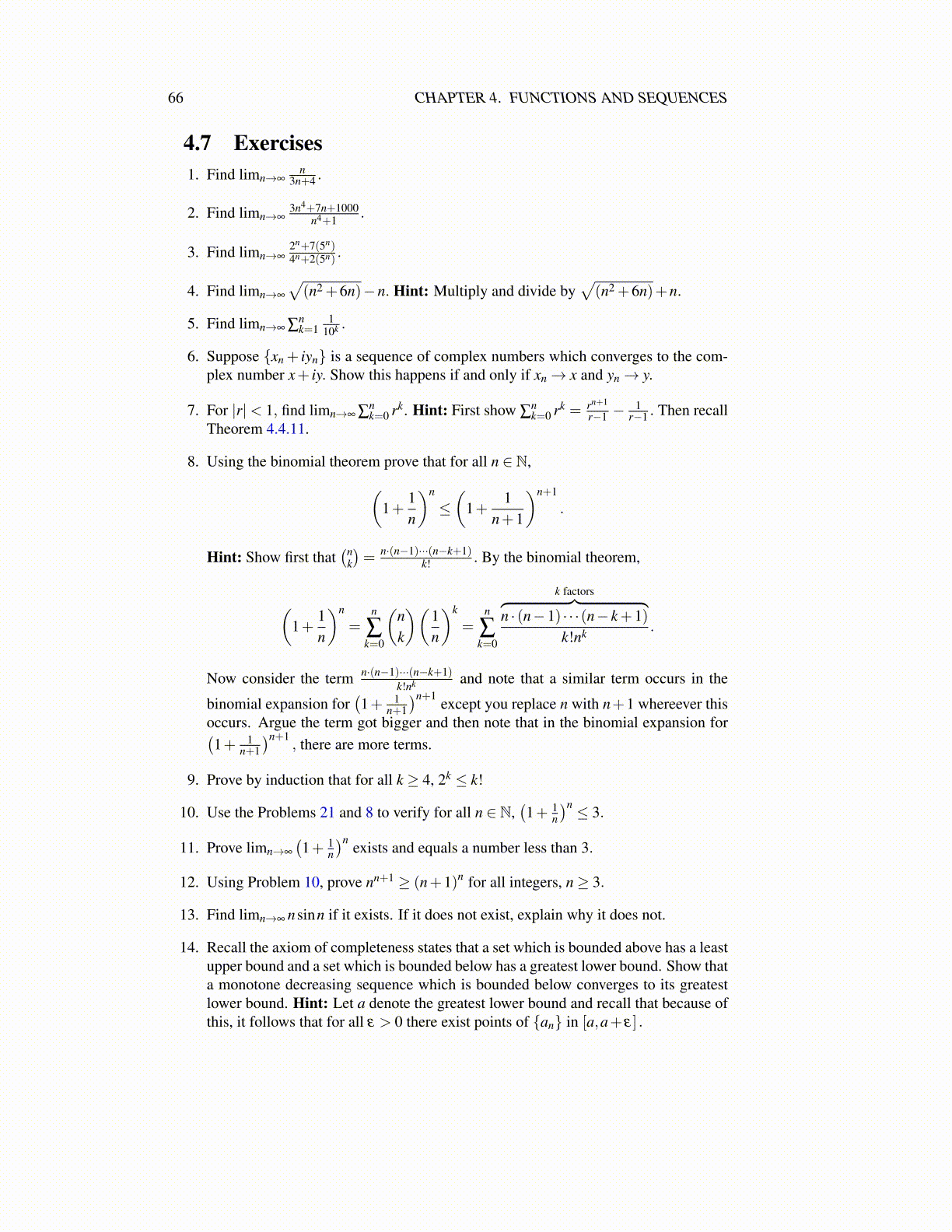
66 CHAPTER 4. FUNCTIONS AND SEQUENCES
n3 > n2 and xn3 ∈ I3, etc. (This can be done because in each case the intervals containedxn for infinitely many values of n.) By the nested interval lemma there exists a point ccontained in all these intervals. Furthermore,
∣∣xnk − c∣∣ < (b−a)2−k and so limk→∞ xnk =
c ∈ [a,b] .
Corollary 4.8.3 R≡∏pk=1 [ak,bk] is sequentially compact in Rp.
Proof: Let {xn}∞
n=1 ⊆ R, xn =(xn
1, · · · ,xnp). Then there is a subsequence, still denoted
with n such that {xn1} converges to a point x1 ∈ [a1,b1]. Now there exists a further sub-
sequence, still denoted with n such that xn2 converges to x2 ∈ [a2,b2] . Continuing to take
subsequence, there is a subsequence, still denoted with n such that xnk → xk ∈ [ak,bk] for
each k. By Proposition 4.4.3, this subsequence converges to x = (x1, · · · ,xp).
4.8.2 Closed and Open Sets
I have been using the terminology [a,b] is a closed interval to mean it is an interval whichcontains the two endpoints. However, there is a more general notion of what it means to beclosed. Similarly there is a general notion of what it means to be open.
Definition 4.8.4 Let U be a set of points in Fp. A point p ∈ U is said to be aninterior point if whenever ∥x− p∥ is sufficiently small, it follows x ∈ U also. The set ofpoints, x which are closer to p than δ is denoted by
B(p,δ )≡ {x ∈ F : ∥x− p∥< δ} .
This symbol, B(p,δ ) is called an open ball of radius δ . Thus a point p is an interior pointof U if there exists δ > 0 such that p ∈ B(p,δ ) ⊆U. An open set is one for which everypoint of the set is an interior point. Closed sets are those which are complements of opensets. Thus H is closed means HC is open.
Note the following:
Proposition 4.8.5 If U = HC where H is closed, then U is open. Also /0 and Fp areboth open and closed.
Proof: Note that Fp is open obviously. Also /0 is obviously open because every pointof /0 is an interior point. Indeed, it has none so they all must be interior points. Therefore,Fp is also closed because it is the complement of an open set. Now H =UC and so, giventhat H is closed, then by definition, it must be the complement of an open set, but it isthe complement of U and so U must be open. It follows that /0 is open because it is thecomplement of a closed set Fp.
Thus open sets are complements of closed sets and closed sets are complements of opensets. I will use this fact without comment whenever convenient.
What is an example of an open set? The simplest example is an open ball.
Proposition 4.8.6 B(p,δ ) is an open set and D(p,r) ≡ {x : ∥x− p∥ ≤ r} is a closedset.